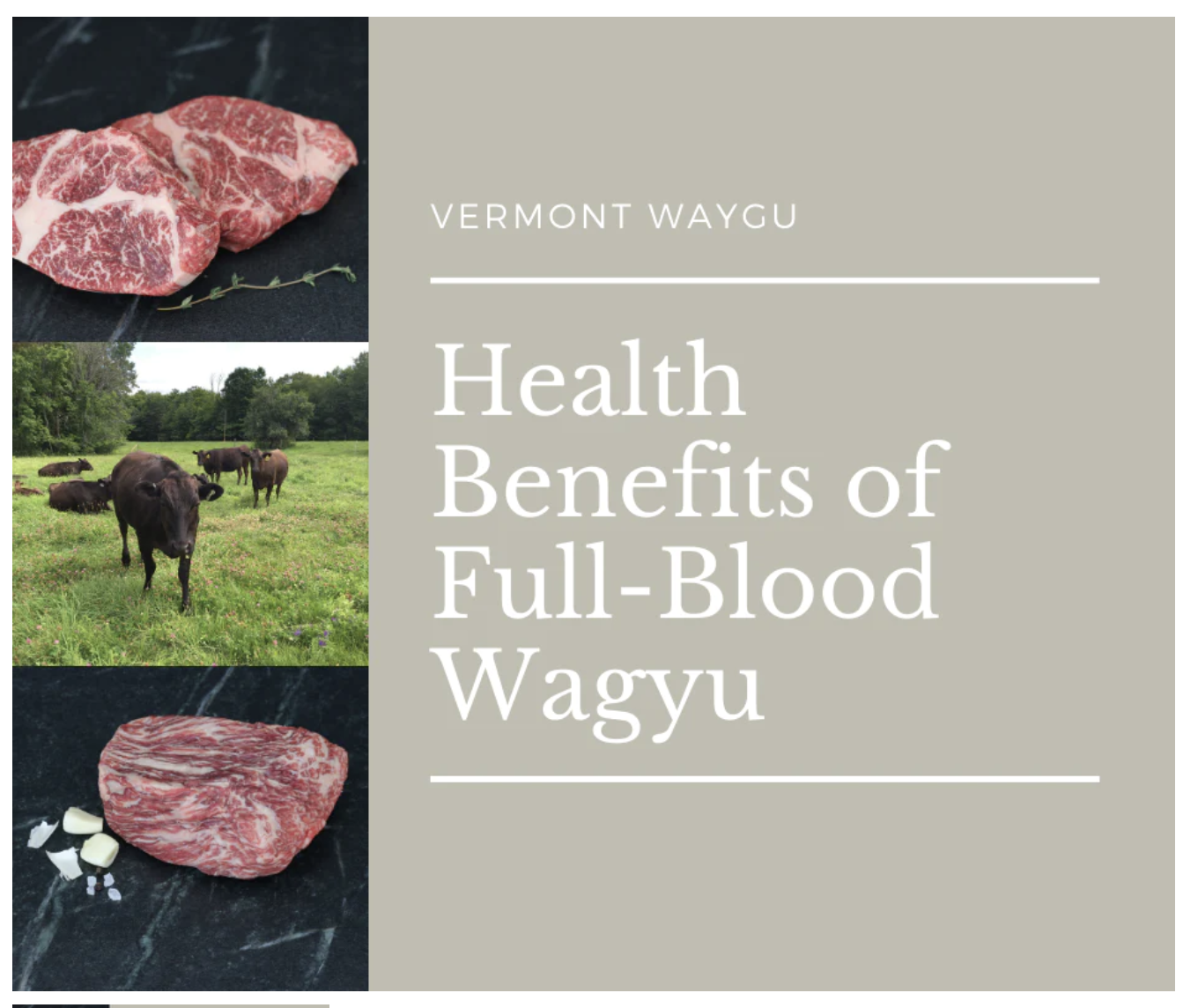


Why Good Food Photography is Important + 6 Tips to Make Your Photos Pop
September 22, 2020


The Best Ecommerce Platforms for Farms and Specialty Food Brands
December 27, 20223 Benefits of Strategic Blogging for Farms & Food Businesses + 7 Topic Ideas


From local food artisans to dairy farmers to co-packers and beyond, every food and farming business needs a digital marketing strategy to truly thrive. An essential pillar of this strategy is to create a consistent and strategic blogging program for your website. The benefits of blogging are substantial and will help you engage your audience and attract new customers.
As a busy entrepreneur, you may be wondering why blogging is important to your food business. After all, it requires your precious time. How can you be sure it will help your business grow? How can you be sure your target audience will even read it?
The truth is that your partners, clients, and prospects do want to read content from you. According to Demand Metric, 82% of consumers feel more positive about a company after reading custom content.
There are three main benefits of blogging for your small business:
- Educate and add value: Blogging is a powerful tool to build a connection with your audience and increase their trust in your brand.
- Boost search engine optimization (SEO) value: Search engines love sites that publish fresh content regularly. This especially goes for long-form content, which increases visitors’ time on-page—an important SEO metric.
- Blogging is versatile and multipurpose: Posts can come in various formats and sizes and incorporate different types of media. Blogs can even be repurposed for other areas of your marketing and business, such as social media and email marketing.
Below, we’re going to take a closer look at:
- 3 major perks of business blogging
- Pro tips to ensure your blog posts keep working for you
- Helpful DIY blog resources
- 7 topic ideas for farms and food brands
3 Major Benefits of Blogging
Educate and add value to your audience.
Blogging allows you to provide helpful, valuable content to your readers. Demonstrate your expertise and establish your company as an industry authority. Establishing this trust will help generate more leads.
Connect
Build a relationship with your audience by using your blog to show life behind the scenes. For example, you might put a spotlight on your team members or share close-up looks at your farming processes. Showing the faces and hard work that goes into your products will strengthen your audience’s emotional connection to your brand.
Stand Out
This also means using your blog to go deeper and show what sets you apart from the competition. Highlight specific examples of your work and experiences.
Do you compete on quality? Does your product contain a unique ingredient or something that your competitors aren’t using? Maybe you offer a rare, coveted flavor. Or perhaps your farm uses a cutting-edge process to be more efficient and eco-friendly. Call out these unique selling points in your blog articles.
Educate
A few types of blog posts that are great for boosting your rep include:
- How-tos
- Recipes including your food product
- Ideas related to your product/service
- Tips and tricks or guides
Blog Post by Vermont Wagyu, read more
Engage
Your blog is a great place to engage with your audience, too. When people comment with questions or feedback, it’s just as much an opportunity for you to learn from them. Keep track of their other interests and questions. This can give you fuel for future blog post topics!
Boost your site’s SEO value.
A pivotal benefit of blogging is the role it plays in your website’s SEO rankings. Search engines like Google favor sites that publish consistent original content. Creating fresh blog posts regularly shows you are active and working to answer people’s questions or help them solve their problems.
Length & Originality
Search engines can also tell which pages are valuable to readers based on traffic and how long visitors spend on each page (hint: the longer, the better!). Since longer content increases visitors’ time on-page, in-depth articles packed with value tend to perform better. Just check out these stats:
- A study by SerpIQ found that bloggers who write articles of 2,000 words or more are far more likely to rank in the top 10 Google positions.
- A study by Moz and Buzzsumo found that long-form content (over 1,000 words) attracts more links and shares than shorter content.
Links and shares also contribute to SEO performance because they help drive more traffic to your article and increase your domain authority.


Go for length in blog posts.
Strive for well-researched articles that provide new information. Perform SEO and keyword research to find out what kind of terms your audience is searching for. When you find a question or topic that people are searching for, but don’t see any high-quality content answering their queries, that’s the sweet spot—get to researching and writing!
We understand that crafting 2,000-word articles regularly is no easy feat. The key is to plan your blog content ahead of time with a content calendar and figure out a schedule that fits your bandwidth. For some, it might be best to plan on one or two posts a month.
Bottom line: Focus on unique, detailed content that offers readers something new rather than pumping out one short article after another.
Evergreen Content
Evergreen content is content that will stay useful and relevant to readers. The majority of your blog posts should be evergreen because they will gain the most SEO value. Focus on topics that will remain fresh and can be easily updated.
Speaking of updating content, remember that blogging is not a set-it-and-forget-it situation! According to HubSpot, 1 in 10 blog posts are compounding. In other words, organic search steadily increases the blog post’s traffic over time.
This is why refreshing your blog posts at least once a year is important. Do this by:
- Updating any necessary information and statistics based on the most recent research.
- Checking what keywords your posts are ranking for or could be ranking for and editing accordingly.
- Finding any gaps where you can add more helpful content (e.g.: new data, ideas, or trends).
Updating your existing blog posts regularly can help increase their rankings and traffic.


Google Analytics showing traffic and demographics
Blogging is versatile and multipurpose.
The beauty of blogging for farming and food businesses is that it is a dynamic, multipurpose tool.
Format
Blog posts can appear in various formats, from long guides to midsize articles to mini-blogs. While we discussed the SEO value of long-form content above, the length of the blog post also depends on the goal of the article and what kind of content it will contain. You can incorporate various forms of content within each blog post, such as:
- Photos
- Videos
- Graphics
- Infographics
- GIFs
Accompanying visual content helps with certain guides and how-to topics, such as recipes. Elements like photos and videos can also add to the article’s SEO performance. Google likes high-quality visual content and so do your readers, based on these findings:
- Blog content with images receives 94% more views.
- 75% of bloggers who place 10+ photos in an article say it’s effective, yet only 3% of bloggers do this.
Outrank the competition and give your audience the kind of content they’re looking for by including relevant and original multimedia in your blogs.
Content Library
Think of your blog as a content library. After all, you’ve invested a significant amount of time and energy into it, so you should certainly maximize every single post.
Blog posts can be broken down into shorter posts suitable for social media posts. Link back to the full article to keep driving website traffic. Don’t be afraid to share different sections of the blog post, or to reshare each article every so often. This is why evergreen content is so important: You can reshare articles to social media based on the season, or when you’ve made important updates to them.


Repurpose your blog posts into social media content.
Your email marketing is another great place to repurpose your blog posts. When a site visitor checks out your blog and likes what they see, they will be more likely to subscribe to your email list so that they can enjoy even more of your awesome content. It helps to offer a freebie, like a downloadable template or guide.
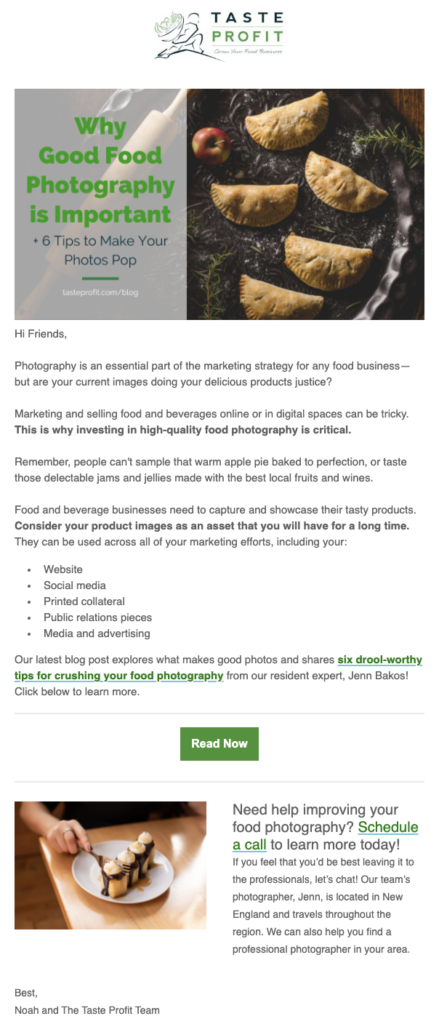

Email update from our blog post on food photography tips
Even your sales and customer service teams can make use of your blog content. Blogs could help your salespeople to close deals with inspiration on how to use your products, or answer questions or concerns of existing customers. Either way, being able to show off your original content will go a long way with loyal clients and prospects alike.
Customer Insights
Monitoring performance and analytics is crucial to improving your blog’s performance and staying in tune with your customers and prospects. Important metrics include:
- Traffic: Which blog posts are performing best? Which have the least traffic? How can you adjust accordingly?
- Comments: What posts are receiving the most comments? What kind of comments or questions are people asking? As noted earlier, this can help you come up with new content ideas or even other solutions based on your readers’ suggestions.
- Visitor Behavior: What are people doing when they land on your blog post? Do they stay for a while? Bounce immediately? Head to another page on your site?
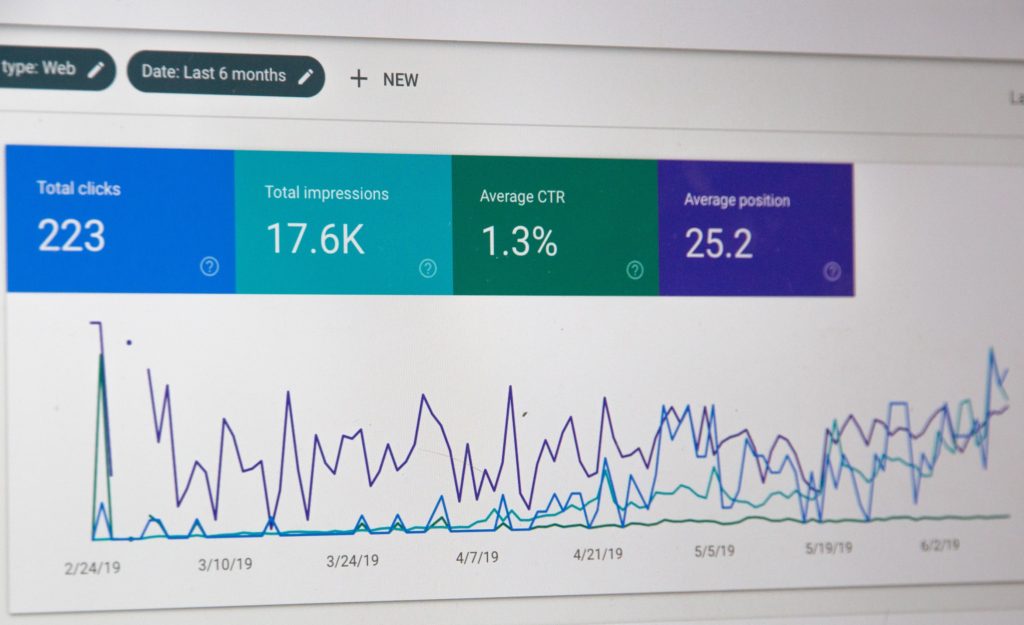

Check your traffic and important stats like click-through rates on Google Analytics.
It will take some time for each blog post to gain initial traction, but be sure to check those analytics regularly to find out what is working and what needs improvement.
So, you’re ready to be a DIY blogger…
Are you ready to start reaping the benefits of blogging for your farm or food business?
If you plan on managing the process yourself, there are many great tools out there to get you started. We particularly love HubSpot’s blogging resources, which include things like free templates and ebooks. Their blog is also a wealth of knowledge, with intensive articles like this complete guide on how to write a blog post.
When it comes to keyword research for your blogs, start with tools like:
Here are a few tips to start you off:
- Create an editorial calendar that works for you and your team (if multiple people are involved) and plan your blog posts out ahead of time. This could be monthly, quarterly, or whatever schedule works for you. There are many editorial calendar templates available.
- Plan your blog content to coincide with your other marketing efforts, whether you have certain promotions, services, or products you want to push. This will ensure your blogging can work hand-in-hand with your social media, email marketing, and other marketing efforts.
- Ask your team and your current customer base for input and ideas on blog topics. You never know where a great idea will come from!
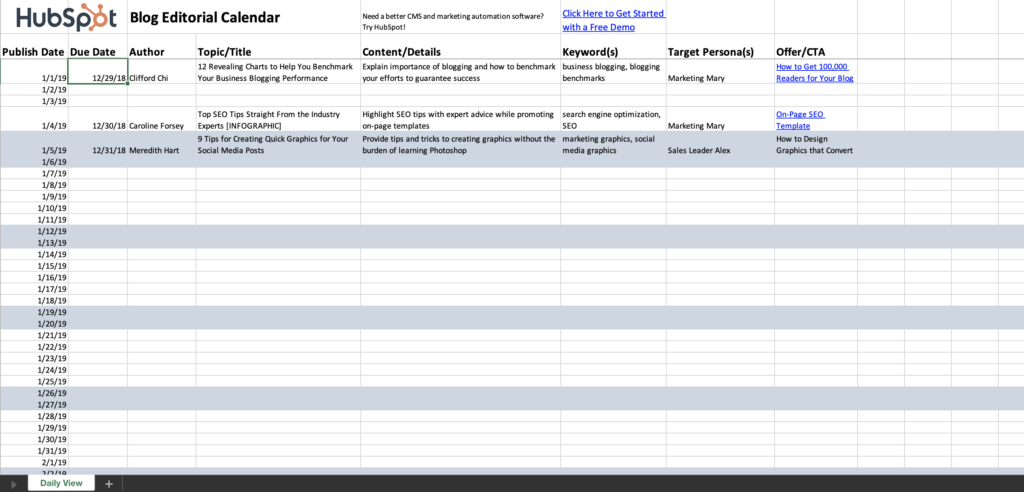

HubSpot Blog Editorial Calendar Template
7 Blog Post Ideas for Farms & Food Businesses
To help you get the creative juices flowing, we’ve come up with a preliminary list of seven blog post topics and ideas.
Listicles
Examples might include:
- 11 Ways to Enjoy Our Red Pepper Jam
- 7 Best Craft Beer Pairings
- 5 Things You May Not Know About Raising Healthy Thanksgiving Turkeys
Pro tip: Odd numbers tend to perform better in headlines, particularly the number 7!
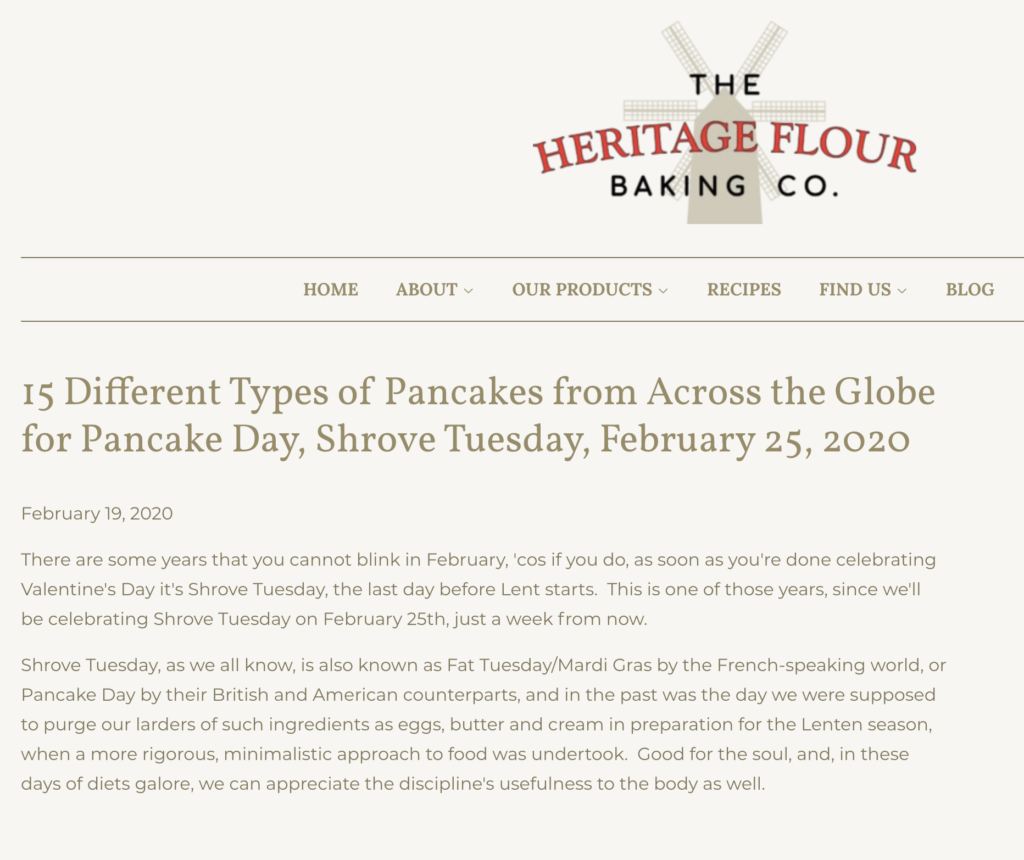

Listicle Blog Post by Heritage Flour Baking Co., read more
Recipes
What better way to sell customers on your product than showing them all the delicious ways they can enjoy it? Include details as well as helpful tips and tricks you like to use to make the recipe extra tasty.
Pro tip: Take photos, short videos, and/or GIFs to embed in your blog. They will help explain your recipe steps even more clearly.
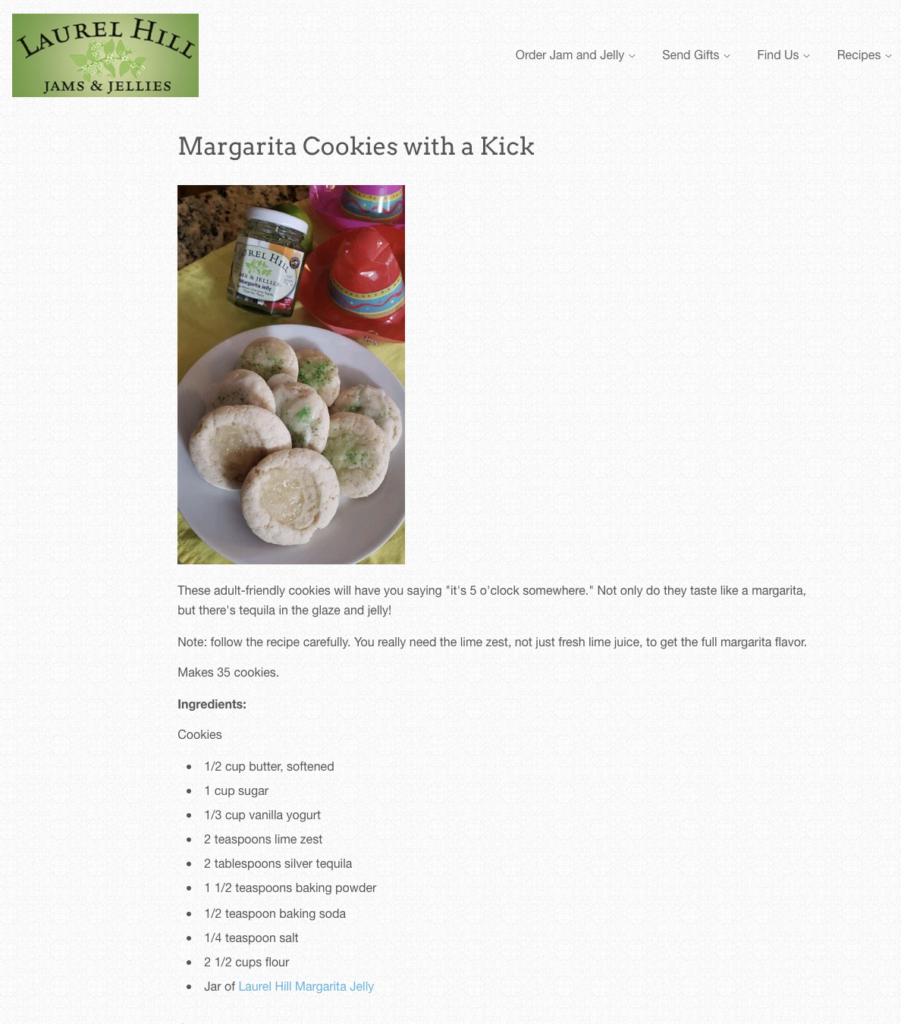

Laurel Hill Jams & Jellies Recipe, check out the full recipe
New Food/Flavor Trends
What kind of trends are you seeing in your industry? Think of food or flavor trends related to your products. How are people cooking or prepping a certain kind of food? This could even mean things like best practices or clean living and eating.
Holiday Gift Lists
This kind of blog post is a great seasonal topic, especially if you offer gift options. Consider holidays such as Thanksgiving, Christmas, Easter, Mother’s Day, Father’s Day, and Independence Day. These events often center around gift-giving and lots of eating!
Behind the Scenes
As we touched on earlier, building that personal connection with your target audience is key. You can do this by sharing how your products are made and the people who keep your food or farming business running.
For example, you could write articles highlighting different aspects of farm life or share tips and tricks on caring for certain livestock or crops.
Pro tip: These posts are also enhanced with photos and videos from behind the scenes. Educate readers on how much passion and hard work goes into your small business by showing them!
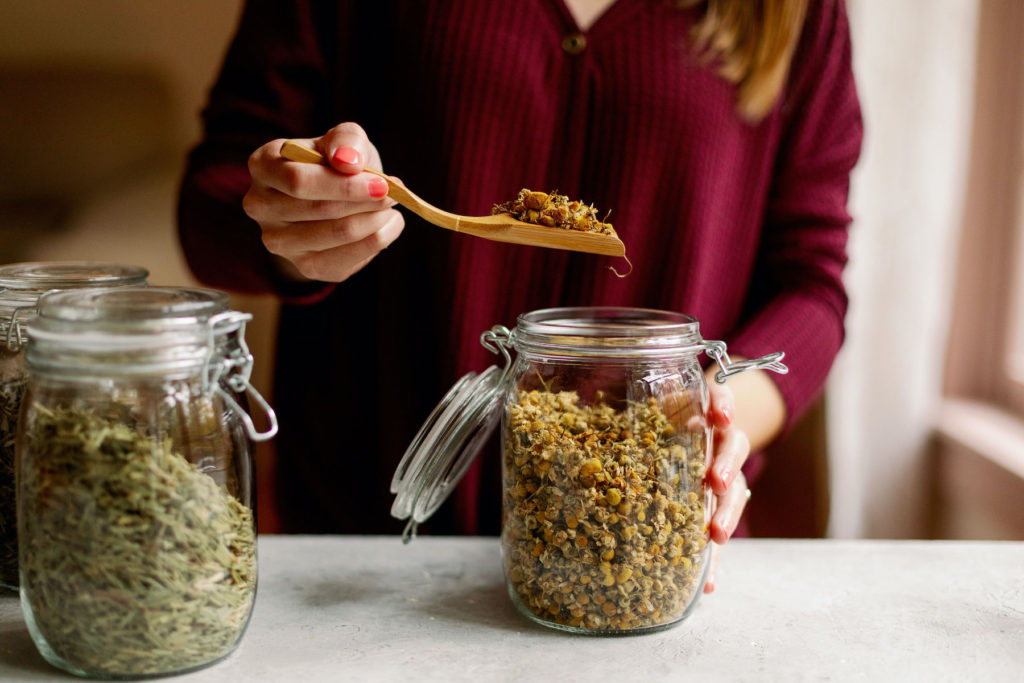

Photo by Jenn Bakos
Farm and Food Business Practices & Ethics
Your blog gives you a platform to show customers that you genuinely care about safe practices and put their health first. Many people are searching for ways to source their foods from companies that use sustainable and responsible practices. Give them some insight into how your farm or food business does this, especially if you do anything unique for your industry.
Nutrition & Finding Healthy Foods
Similar to how many consumers now want to support ethically responsible companies, they also want to shop with local food artisans and farmers to find products that are more nutritious and wholesome. Tell them both what to look for and what to avoid to ensure the health and safety of their families.
Blogging: Food for Thought

While it may seem like a significant investment of your time and energy, the benefits of blogging when done well are priceless. A solid blog strategy will help your farm or food brand:
- Educate your audience and gain industry authority.
- Improve your SEO and your chances of being found online.
- Create a dynamic library of content to be used across departments.
We hope these ideas and tips on why blogging is so important are enough to spark some thoughts as you start your business blog.
If you would rather leave the blog content writing to the professionals so that you can focus on growing your business and working on your passion, contact Taste Profit Marketing today! We will be happy to assist you by planning and implementing a blog program for your business. We can either coach you to develop your own blog strategy or create and execute a custom plan that meets your needs.

